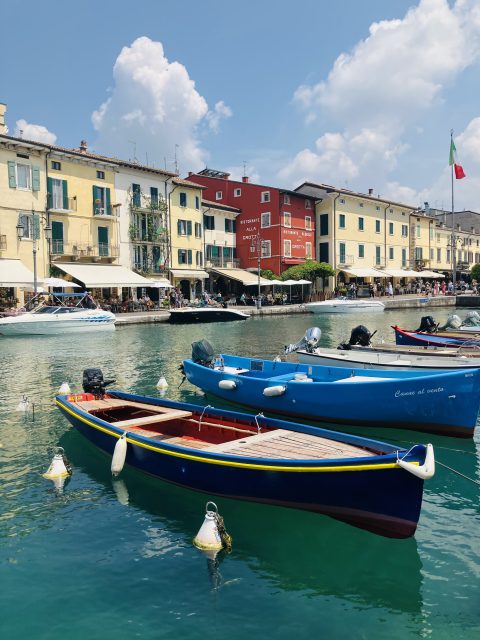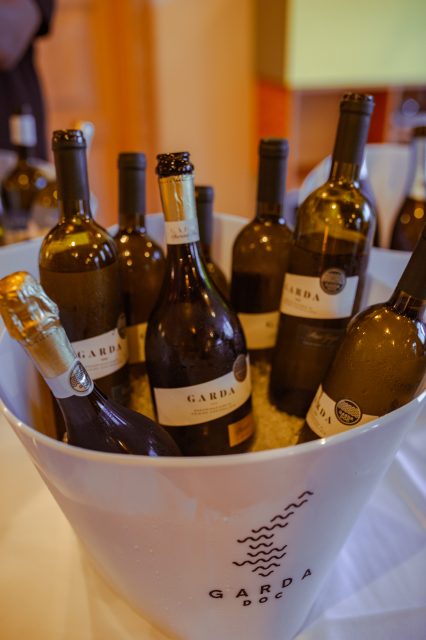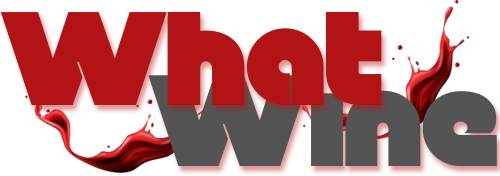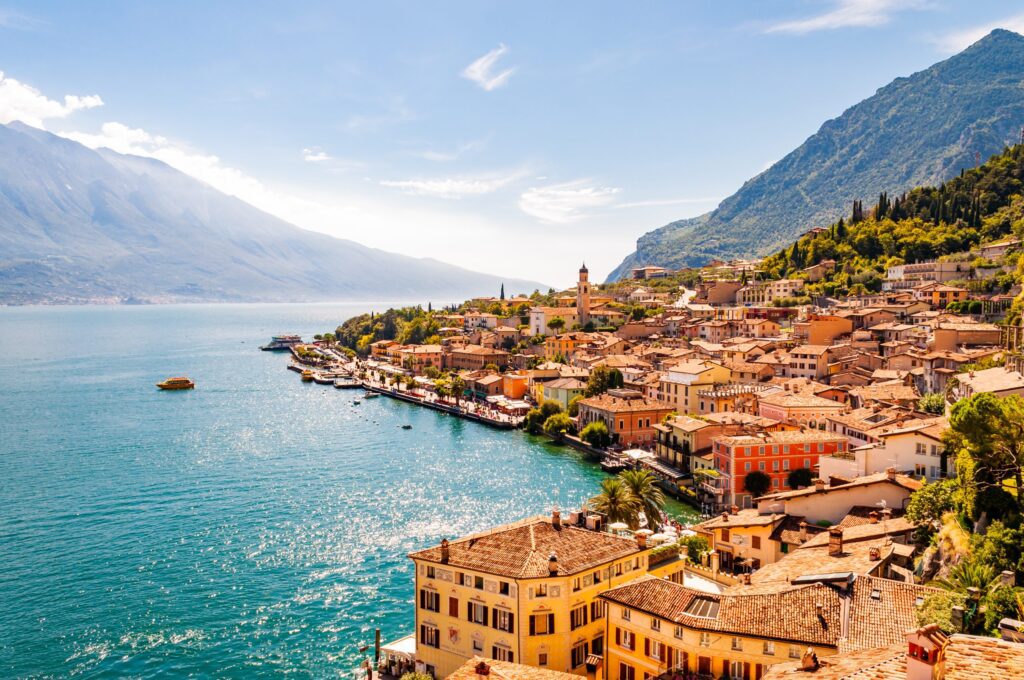Italy’s Garda Dock, the wine-producing region surrounding Lake Garda, has conducted a detailed analysis of its global standing, looking at its strengths and weaknesses. Sarah Neish explores these in this exclusive report.
“We will soon have something extraordinary in the world of wine,” said Paolo Fiorini, president of the Consorzio Garda DOC, at the third Garda Wine Stories conference held in the Lake Garda town of Lazise earlier this month.
“We consider it very important to have a real picture of the situation – including our weaknesses as well as our strengths – to understand where we want to go as a region,” he told national and international press as well as a group of Garda DOC producers who gathered in June to hear the latest news from the region.
Fiorini reiterated his intention to look at every angle, saying: “We want to be aware of our weaknesses.”
To this end, the Environmental Protection Department conducted an internal SWOT analysis, which included gathering detailed feedback from producers, distributors, bottlers and cooperatives to assess the internal elements of the brand. In addition, the Environmental Protection Department commissioned the University of Verona to analyze Google search terms associated with the brand, with some surprises.
Founded in 1996 to promote the quality of the region's wine varietals and protect its producers, the Garda DOC underwent a transformation in 2016 “which gave it momentum and introduced some new regulations,” explains Valentina Di Chiara, co-author of the SWOT analysis project.
If you are not familiar with the Garda DOC, here are some amazing facts and figures.
The Garda wine region is heavily focused on white wines (73% of Garda’s total wine production was white in 2023), with Pinot Grigio and Chardonnay leading the way, along with the local white grape Garganega. Sparkling wines are also on the rise with 622,267 bottles of sparkling produced in the Garda wine region in 2023. For comparison, around 5,400,667 bottles of Chardonnay were made in the Garda wine region in the same year.
There are currently around 250 Garda DOC member producers, and these producers come from areas around Lake Garda, from Soave and Valpolicella to Lugana and delle Venezia, meaning you may be more familiar with the more traditional classifications listed on wine labels than the Garda DOC itself. For example, a wine produced in Soave, an area to the south of the lake, may be labelled either Soave or Garda DOC.
The advantage of a product with the Garda DOC label on its bottle is the immediate association consumers have with Lake Garda as a much-loved tourist destination (around 13 million tourists visit Lake Garda every year).
Recognizing the good
According to the SWOT analysis, the perceived value of Garda wines appears to be higher than that of other Veronese appellations. For example, Garda DOC includes Veneto and Lombardy under its umbrella, and while producers from these locations may make Pinot Grigio from Delle Venezie, for example, or Chardonnay IGP from Veneto, they may also produce Pinot Grigio from Garda DOC or Chardonnay from Garda DOC. In this case, Garda DOC wines are able to command a higher price.
According to the study, grape prices in the Garda region are also higher than other local appellations, as is the case with the prices of wines produced from the Garda DOC region compared to the Delle Venezie Pinot Grigio wine, where the premium for wines produced from the Garda DOC region is 6.5%.
That's why President Paolo Fiorini said: “We have to put aside any idea of lowering prices.”
Secondly, the wines are “directly linked to the beauty of Lake Garda, which has a positive effect,” said De Chiara. “Consumers may not necessarily know Garda Dock as a wine region, but those who do know it really love it.”
She noted that the Garda DOC had also incorporated some “very highly reputed” wineries, which had helped improve the way Garda DOC wines were perceived.
Another advantage, according to the SWOT analysis, is that the Garda DOC is “well-run, with no complaints from producers.” While this may seem like a luxury, db finds it to be a necessity, as wine producers are free to decide each year whether to allocate their Pinot Grigio harvest, for example, to the Garda DOC or the Delle Venezie. This means that membership is constantly renewed, unlike some more traditional appellations where once you register, you are affiliated with that body until the time you choose to leave. This keeps competition high and it is in the Garda DOC’s interest to keep the wheels well oiled and producers happy.

Addressing weaknesses
Of course, everything can't be sunny and beautiful, and the Ghardaia Police are more than willing to face their weaknesses.
According to the in-depth analysis of strengths, weaknesses, opportunities and threats, “e-commerce has not yet developed in this area,” De Chiara explained.
But the biggest problem is that the label “doesn’t have any specificity” for the consumer, which requires greater focus. “We cover so many different wine categories and different regions under the designation of origin, it’s hard for consumers to define it,” De Chiara explained.
There is also a “lack of information on the potential to expand the range of member and stakeholder offers” through the Garda DOC. This means that the label could be better at communicating the different promotional activities it can offer producers to put their brands in front of the world.
Furthermore, Professor Eugenio Pomareci, lead author of the SWOT study, admits that while wine from the Garda Dock area can often be priced higher than wine from neighbouring regions, a number of “pirate operations” operating in the area still sell wine “at very low prices”.
“It’s always hard to stop these things, and they cause a loss of reputation and trust in the area,” said Pomaricci. He believes the solution “is to increase our prices and our presence in the retail channel,” although he was quick to add that retailers themselves have played an important role in preventing the area from devaluing.
He stressed that “these low-quality, low-priced wines cannot be the standard-bearers of the label.”
In order to help convey the message of quality, producers may want to consider adding words such as “superiore” or “riserva” to their Garda DOC wine labels.
“Some wineries in the region can easily charge a higher price for their wines, but it’s not so easy for others,” Pomarichi added. “Having this kind of name on the wine label would help these wineries.”
There is also an educational piece to be done among the wine connoisseur community.
“Garda wines are on the wine lists of restaurants in some countries, which prefer historical Italian appellations,” said Pomaricci. “We need to be better known and recognized in the restaurant sector. We have started working on this and communicating our value to wine connoisseurs.”
Overall, the SWOT research shows that Garda DOC is a young appellation “in very good shape”, and that the creation of the Consorzio in 2016 “accelerated sales to 140,000 hectoliters”.
“We are now in a moment of reflection to see if we can enter a new phase of development,” Fiorini concluded.

What does Google say?
The second part of the Garda Stories conference analysed Google searches made in relation to Garda wines and those of the surrounding areas.
“Google searches can act as an indicator of what will happen commercially,” says Professor Angelo Zago of the University of Verona’s Department of Economics, who led the search engine research.
The study focused on terms such as Lake Garda, which were searched in countries including the UK, US, Canada, Russia, as well as the European Union.
The results showed that the term “Garda” is the most requested term among the main terms in Verona, followed by Valpolicella and Lugana.
Zago's team found that searches for the word “Garda” were most common in the UK and Germany, although this was not necessarily related to wine and was more likely to be a tourist search for Garda as a holiday destination as the term is most often searched during the summer.
Searches for Garda DOC's main competitor – Lugana – were significantly lower (except in Germany) than for Garda, evidence that the Garda name has global weight and recognition.
A similar picture emerges when we look at Google searches for “alcoholic beverages” in the context of Verona’s names. For example, Garda and alcoholic beverages, Valpolicella and alcoholic beverages, etc.
According to Zago's analysis, England, Germany and Austria showed the greatest interest in wines from Verona, while Trentino and Lombardy topped the list of consumer interest on Google.
“We saw how a wine brand could be a driver in a region,” Zago said. “Think of Montalcino and Bruinello. The first brand wasn’t well known until its wines started gaining worldwide popularity.”
The Google project is still ongoing and aims to analyse the role of tourism in stimulating interest in wines from different appellations, including Garda, which a parallel SWOT analysis has already shown occupies an ideal corner within the heart of the UK consumer.



